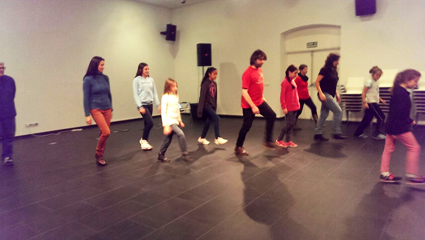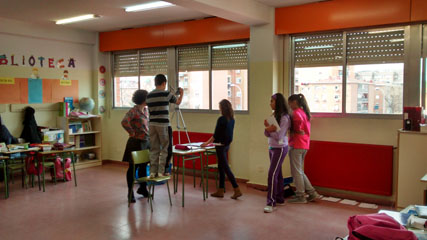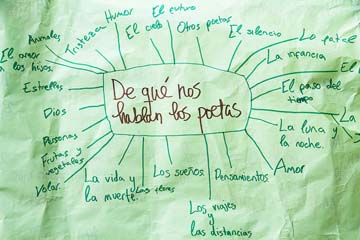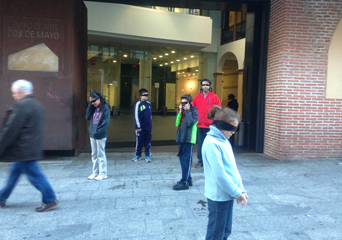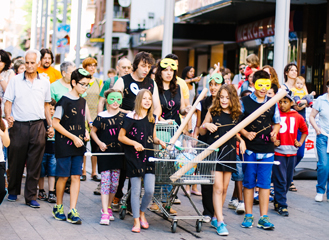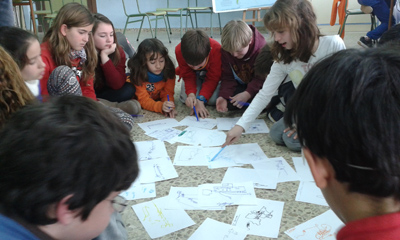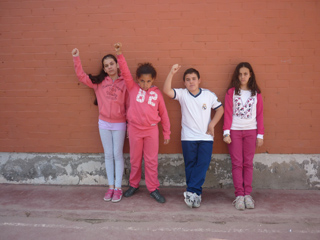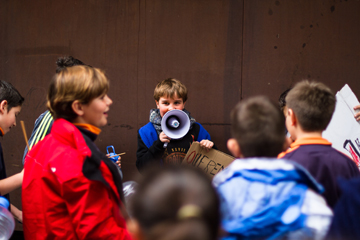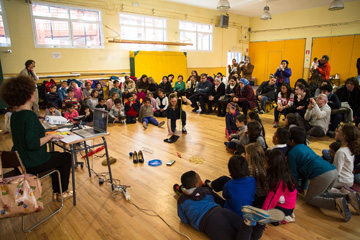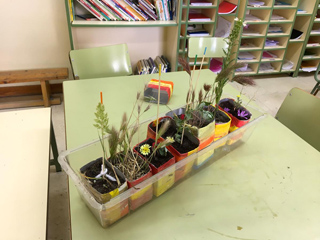Aimed at 5th and 6th grade Primary education pupils.
Musician Nilo Gallego has created a space of experimentation, where every Tuesday, a group of local children gather. Every week, they work on listening, and learn about the possibilities of experimental sound and of expanded theater.
Nilo Gallego is a musician. He produces performance pieces in which experimentation with sound is the starting point. In his pieces, which always have a component of play, he looks for audience participation, and interaction with the environment and with everyday life. He plays the drums, percussion, and electronics.
This project is premised on the need to work with the communities that are closest to the museum, in activities the can stretch in time, in order to build stable, flexible, and lasting relationships. For the fourth year in a row, we offer an after-school for third grade primary pupils.
Musician Nilo Gallego has created a space of experimentation, where every Tuesday, a group of local children gather. Every week, they work on listening, and learn about the possibilities of experimental sound and of expanded theater.
